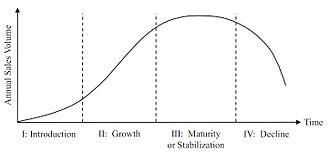True self-assessment is painful.
It is intrusively exposing in areas that we have (likely) given great effort to cover. A raw view of yourself and assessing what is strong and weak creates the potential that (every once in a while) you may need to put the book down and get yourself a cup of coffee or something stronger to drink. If it’s painful to truly assess yourself. You can know that you are doing the hard work when you find yourself at the end of your resources in a certain area. As with anything of worth, you do the hard work on the front end or on the back-end. The longer you wait—the higher the cost when you get around to doing what you have avoided.

How you are viewed comes complete with general assumptions and information filters; all mixed up with experiences that potential clients have had in the past. How you envision yourself is not always in line with the opinions held by the person across the table.
The digital sun rises and sets on personal brand.
We like to think of ourselves as a vast and glorious combination of the unforeseeable factors that are unique to our life experience. We justify this perspective with optimistic recollection of the “tough circumstances” that have influenced our path – all of which have made us into who we are. Yet, while we optimistically frame these translations of our past, we pessimistically frame the translations of other’s past (even those with the exact same historical circumstances as us). As with most points of reality, truth is more universal than our minutely selfish view allows.
It is beneficial to see the client as a vast combination of unique factors that have made them who they are – because that is how the client sees themselves. This way you’re both working from the same viewpoint.
You’re not there to fix your client—you’re there to do business. You’re there to sell.

We only ever influence the areas that we are given permission to affect. You have permission to do business – stick to that for now. Reality doesn’t matter—only your client’s perception of reality. How they perceive you is their reality. Your abilities to process who they are (their weaknesses and strengths) are nothing more than tools in your arsenal that help you understand… what is. Figure out who they are and how they see you in order to move forward with business.
In order to understand others, you must admit who you are.


Know what you believe. Choose what you focus on. Change or enhance (when necessary) whatever state you are in. Learn the process by which the internal movie of your outside reality is created, and focus on the only part of that internal screenplay that you are truly in control of… yourself.
If your internal or external dialog leading up to an appointment is, “This person is a pain in the butt”, or “I don’t want to deal with them” or “I can’t believe that they don’t do [this or that] to make it better”… you’re polluting the conversation with outside factors that have nothing to do with your purpose. These pollutants will do nothing besides cloud your mind. Simplify; adjust your focus to their perspective and you can engage them as they are. This creates one variable (the customer), rather than two.
You will be the one in control, because you’re the one who is flexible and free to engage them as they really are (even when they can’t see themselves). We often deceive ourselves when dealing with difficult (or even loved) people because; we assume they will change once we share what we have in our mind—because they would see things just like us if they could only understand what we know.
